Mitsubishi Eclipse Cross 3 1.5

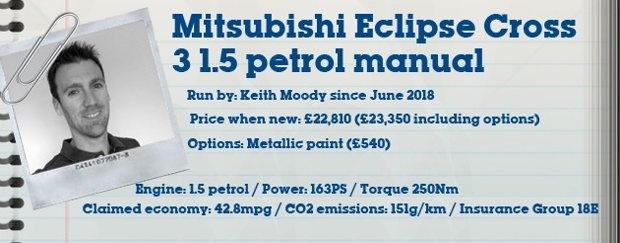
- Mitsubishi's Eclipse is all grown up
- Will there be a diesel version of the Mitsubishi Eclipse Cross?
- Eclipse Cross gives space the boot
- Is the Mitsubishi Eclipse Cross better than its rivals?
- Touchpad leads the way on Eclipse tech
- A victory of style over substance?
- What's wrong with the Mitsubishi Eclipse Cross?
- Who would buy a petrol Mitsubishi Eclipse Cross?
- Wishing for a rally-inspired Eclipse Cross
- Mitsubishi Eclipse Cross to enforce rapid justice
- Eclipse proves a reliable steed
- Total Eclipse of the heart - or a Cross to bare?
Mitsubishi's Eclipse is all grown up
Get to know the latest car on the HJ fleet - the Mitsubishi Eclipse Cross

Date: 14 June 2018 | Current mileage: 1012 | Claimed economy: 42.8mpg | Actual economy: 38.8mpg
With the Eclipse Cross, Mitsubishi is hoping to inject its new SUV offering with a bit of magic. Launched in 1990 The Eclipse was the Japanese car maker’s coupe offering and competed against models like the Toyota Celica.
The Eclipse was a joint venture between Mitsubishi and Chrysler and gave birth to the Plymouth Laser as well as the Eagle Talon. These were affordable sports cars with small turbocharged engines and, as such, proved reasonably successful.
Plenty of mid-1990s Second Generation models found their way onto UK roads, proving popular with the Max Power crowd. The Eclipse was so popular with the modified car market that a souped up lime green version even found its way onto the big screen, appearing in the Fast and the Furious.
As it hit middle age, the Eclipse put on weight and lost its sharp lines until it was finally discontinued in 2012. But when Mitsubishi decided it wanted a slice of the rapidly growing SUV market, it decided to revive the name – probably thinking that its audience had grown up too and might need something a less NOS-friendly and bit more family orientated.

Our long-term Eclipse continues some of its predecessors traditions. It’s got plenty of nods towards the sharp lines of a coupe. Quite how successful its styling is will depend on your point of view, perhaps. And like the original Eclipse, it comes with a small turbocharged 163PS petrol engine – a 1.5-litre mated to a six-speed gearbox.
That means it’ll get you to 62mph in about ten seconds, which is nearly twice as long as its sporty predecessor. But that’s, ok right? I mean, this is a sports utility vehicle. Well, not really. Because it’s neither sporty nor is it practical.
Just take the boot space. The Eclipse is roughly the same size as a Peugeot 3008 – yet where the Peugeot manages 520 litres, the Eclipse is good for 448 litres (or 341 litres in max legroom mode).
It’s fair to say, then, that the Mitsubishi has some big questions to answer to prove that it’s a serious player in this segment – questions that we’ll be looking to answer over the next six months.
Will there be a diesel version of the Mitsubishi Eclipse Cross?
With only a petrol available, sales of Mitsubishi's crossover are already compromised

Date: 28 June 2018 | Current mileage: 1835 | Claimed economy: 42.8mpg | Actual economy: 37.7mpg
With such a strong demand for diesel SUVs in the UK, we were a bit surprised that the new Mitsubishi Eclipse Cross was only available as a petrol. Let's face it, this sector of the market is becoming increasingly crowded and new rivals like the Volkswagen T-Roc, Seat Ateca and Toyota C-HR all offer an oil burner.
If the company is full throttle behind the petrol powerplant, then why not offer a fire-breathing 2.0-litre turbocharged all-wheel drive Evo version? This is Mitsubishi, after all - king of rally stages, and winner of many Paris-Dakar events. Perhaps the danger was that the Eclipse could’ve ended up a (very) niche product – and that definitely wasn’t the goal. This, after all, is the car with one job to do – shift units. Quite how it's meant to do that with such a limited engine choice remains to be seen.
Still, despite its small 1.5-litre size, the petrol engine is one of the car’s strong points. After running so many long-term diesels, it’s nice to have something petrol. But is refinement a small price to pay for fuel economy? The official figures for the Eclipse Cross are that it will return 42.8mpg on the combined cycle.
But how does that compare to real world driving? Well, according to our Real MPG data the manual version of the car averages 33.8mpg. We’re actually doing a bit better – regularly seeing 38mpg on our drive to work. Longer journeys have seen 40mpg returned, which for a small petrol engine powering a Tonka Truck is pretty impressive.
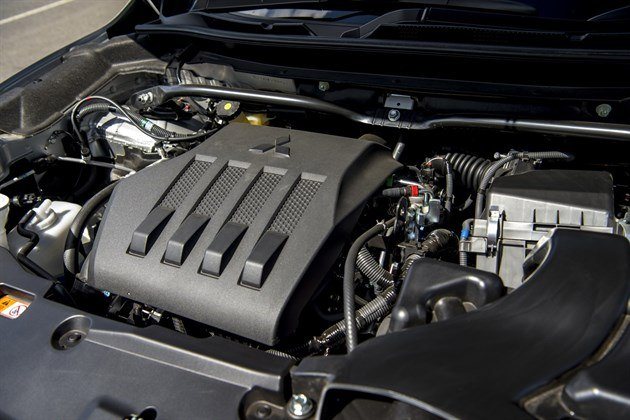
Getting real world data on the Eclipse Cross is hard, though. So far, only seven people have submitted any data (and one of those is me) compared to 1153 results for rival the 2014 Nissan Qashqai. Perhaps you could argue that the Nissan has more entries becuse its been on sale longer, but even the recently launched T-Roc has three times the number of entries of the Eclipse Cross.
So far, I’ve only seen one other example on the road – a stickered-up dealer car that was out either on a test drive or as a loan vehicle. Does this mean that UK sales are slow going for Eclipse Cross? At launch, sales were predicted to be between 6500 and 10,000 (and 70 per cent of those were expected to be automatics). According to Mitsubishi, 4886 had been registered by t he end of November.
We can’t help but think many drivers are put off by the fact that there isn’t a frugal diesel on offer. With a young family and a 60-mile-plus round trip to work, we easily cover more than 14,000 miles a year so the impact on the wallet has been felt quite keenly compared to the diesel Ford Kuga or Peugeot 3008 we were previously running.
So while Mitsubishi refuses to give the green light to a performance 'halo' version of the car and an expensive rally programme grab headlines (and drivers' imaginations) to boost sales, we reckon the diesel soft-roader can’t come quick enough. One is reportedly on the way - a 2.2-litre four-cylinder, but by the time it arrives the Eclipse Cross may have missed its moment.
Eclipse Cross gives space the boot
For such a big car, we struggle to find where all the space has gone
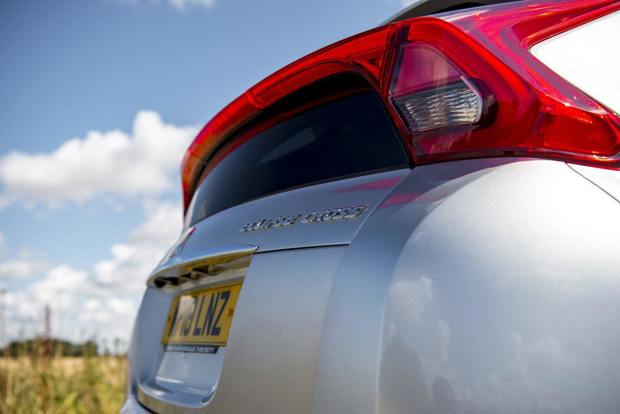
Date: 12 July 2018 | Current mileage: 2297 | Claimed economy: 42.8mpg | Actual economy: 38.4
If you’re going to take on rivals like the multi-award winning Peugeot 3008, then you need to bring your A-game to the table. The French carmaker’s SUV seems to have won every award going and during the six months we spent with the car we were impressed to say the least.
Where the Peugeot really excelled was in interior space. If you’ve got a young family, it’s this aspect of a car (as well as how often you won’t have to put fuel in it) that you’re eyeing up the most. Children mean that you no longer have time to read Evo in the bath before work, and that your capacity to retain 0-60mph times has been replaced by an intimate knowledge of manufacturers’ boot spaces.
And the 3008 rules in this department. With the seats up, it’ll ingest 520 litres. Five-hundred and twenty litres. It’s a useful space, too with no over intrusive wheel wells or random bits of architecture getting in your way.
Sadly, the same can’t be said of the Eclipse. For such a big car, we were left wondering what had happened to all the space. But don’t take our word for it, let’s look at the evidence. The Eclipse Cross is 4405mm long, 1805mm wide and 1685mm high. Compare that to the 3008: 4447mm long, 1841mm wide, 1624mm high. So the Pug is 42mm longer, 36mm wider, but the Eclipse is 181mm taller. And yet, the Pug manages 520 litres of boot space compared to 341 litres.
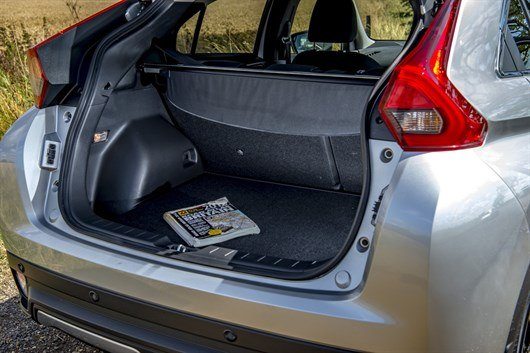
Intrusive wheel wells and coupe styling mean bootspace is compromised.
And boy, do you feel that. Whether its pushchairs, paraphernalia for days out, or suitcases for family holidays, getting anything in the Eclipse Cross is a challenge. Clearly, this is a problem that Mitsubishi is aware of, so they’ve made it so you can slide the rear bench forward. On paper, this improves things with space increasing to a not too shabby 448 litres.
But wait, there’s a problem. With the seats slid forward, you’re left with a gaping hold in the Eclipse Cross load area, compared to the 3008 which has a flat load bay. Quite what you’re supposed to put in this gap is beyond us. Something tall perhaps? You certainly won’t be able to put tall people in the rear seats with the bench forward. The extra space is hard to use.
That’s a criticism of the overall loadspace design. For a start, the wheelarches intrude into the boot. There’s a boot lip, and the side of the body also curls in making it a pain to get wide items in and out. What decent legroom there is in the back for rear seat passengers is compromised by that sloping coupe-style roof, which means that taller passengers will find the roof a bit too close for comfort.
Overall, it’s a 5/10 for the Eclipse Cross when it comes to practicality. And this isn’t our only niggle with the interior, as you’re about to find out…
Is the Mitsubishi Eclipse Cross better than its rivals?
We find out how it compares to the Peugeot 3008

Date: 26 July 2018 | Current mileage: 2984 | Claimed economy: 42.8mpg | Actual economy: 35.2
There’s no big secret to making something feel user-friendly. You just make the button that people use the most the biggest and put it in the most obvious place. If you get stuck, you can always cheat and copy your neighbour’s answers on the test. So why do some car makers make such a fist of it?
It shouldn’t be a surprise, I guess. It took them all a while to agree on putting the accelerator, brake and clutch in the same place. But our long-term Mitsubishi Eclipse Cross feels like a TV remote from the 1980s. The ones where all the buttons were exactly the same size and laid out in random order – rather than volume or program up/down taking precedence.
The interior of the Eclipse Cross feels like it’s been designed by someone who has never really used a car before. For example, there’s a phone tray under the centre console – so far, so good – but the tray is to narrow to take my iPhone 8 (or rivals like the Samsung Galaxy).
Exhibit B. There are cupholders in the centre console, but you can’t use them for anything other than can-sized drinks because they’re not deep enough and prevent the armrest from coming all the way out. So you either use the cup rests, or the use arm rest. I’m not really sure why you have to choose but there you go. There are ones in the door pocket, but they’re at an angle so you won’t be putting a coffee in there.
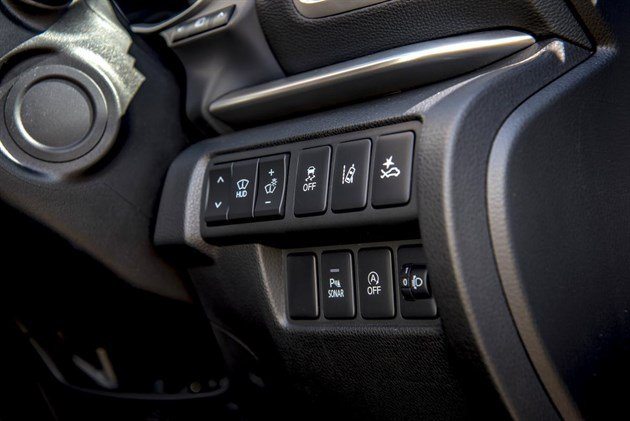
Switchgear feels like its left over from the 1990s.
It’s the same with the rear door pocket storage, only they’re even smaller. Which means your kids can just about get a Fruit Shoot in them – but they’re so deep you’ll never get them out. Plus they’re angled so good luck with that. Apart from the slim, angled slots the door pockets are also covered off in the rear. Which seems bizarre – why not have a storage tray like so many other models?
Our car comes with a head-up display, but it’s not that easy to see. I find that with the seat adjusted to my liking, I can only see about two thirds of the numbers. There is a way of adjusting the display up and down, but it just doesn’t adjust enough. Fail.
Other niggles? Well, the 3008 manages to have enough space for a tablet in its centre console storage. I think there’s even a spare charging port. No such luck in the Eclipse Cross – you’ll get a few bits and pieces stashed but nothing too big. The interior lights are poor and the kids find it hard to do their seatbelts up in the dark. And most of the switchgear looks like it’s left over from the 1990s.
And so on and so forth. We might sound like we’re being harsh, but this is one of the most competitive sectors of the market and ‘sort of okay but not really’ isn’t good enough.
Touchpad leads the way on Eclipse tech
Mitsubishi's new crossover is packed with toys

Date: 9 August 2018 | Current mileage: 3925 | Claimed economy: 42.8mpg | Actual economy: 36.8
Three. It’s the magic number, right? It’s certainly the trim version that Mitsubishi hope to sell the most of when it comes to their new crossover – the Eclipse Cross.
Just in case you were wondering, no – there is no 1. The range starts with the entry-level 2. This gets a decent level of spec including a rear-view camera, touchpad controller (more on that later), automatic high beam, forward collision mitigation system, lane departure warning, DAB radio, LED daytime running lights, 16-inch alloys, cruise control and climate control.
There was a lot of noise at launch about the Eclipse Cross not getting satellite navigation, but we’re with Mitsubishi on this one. We much prefer to use an app like Waze or Google Maps as they’re so much more up to date and often provide real time traffic information. And all Eclipse Crosses get Apple CarPlay and Android Auto as standard.
Ours is a 3, which means it get the head-up display, front and rear parking sensors, 18-inch black and silver alloys, heated front seats, dual zone climate control, electric heated and folding mirrors, and keyless operation. The 4 gets a power panoramic sunroof, upgraded speaker system, 360-degree parking camera, lane change assist, and blind spot warning.

So there’s clearly a lot of tech on this car, which suits us fine. It’s a decent balance or new and old, too, with traditional controls for heating while audio is on the 7-inch touch screen. Sure, the touchscreen isn’t perhaps the most high-definition but it is really easy so use. And it works in Mitsubishi’s favour – this isn’t a car with hundreds and hundreds of settings sub-menus. It’s clear and simple and if you can’t find it then it probably isn’t there.
You can control the touchscreen by pressing it with your finger – or by the new touchpad. Hands up, it’s taken us a long time to get used to it. There’s a learning period where it actually makes things a bit more complicated as you need to look down to find the quick keys (back, apps, audio, home).
One criticism we have of this system, though, is that it’s not immediately obvious where you are on the screen - there’s no curser or pointer, although the section you’re working with is highlighted. However, it remains to see how many drivers will warm to it.
A victory of style over substance?
It's bold design has been lauded by critics, but at what cost?

Date: 23 August 2018 | Current mileage: 4866 | Claimed economy: 42.8mpg | Actual economy: 34.7mpg
Like the second-generation Megane, the standout feature on the Mitsubishi Eclipse Cross is its rear styling. But does prioritising style over substance means this Japanese soft-roader is compromised? Grand design gurus certainly don’t think so.
This is the car that won Good Design Award 2018 run by the Japan Institute of Design Promotion. The judges found the ‘bold wedge profile‘ very striking. We’re not sure if it really qualifies as a wedge – it’s no TR7, after all.
The judges, presumably wearing red-trousers and thick Gucci-framed glasses, also dug the ‘line that cuts sharply into the sides’ locating the door handles to create a unified look, and that ‘horizontally divides the rear window to retain good visibility.’
It’s this last statement that is a puzzle. Having lived with the car for a good few months, that black plastic line is a niggle. It perfectly obscures the driver’s rear view of the car behind, which means you can see any turn signals. Or the driver’s face to gauge levels of stress.
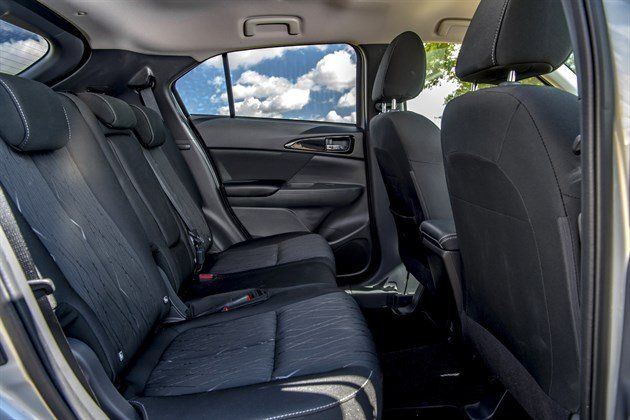
It’s also frustrating that the bottom panel of glass can’t be cleaned (although it can be heated), which can make reversing tricky. Luckily, there is a rear camera and parking sensors – but we’d take a decent view of the road any day.
So what else did the judges have to say? Well, they were impressed by the ‘coupe-like silhouette’ which apparently provided ‘the cabin space and comfort required in a SUV.’ Either they’ve never sat in it, or the space and comfort required by an SUV is less than the space and comfort required by a normal human being.
For a start, the sloping roofline means taller rear seat passengers will find their head a bit too close to the roof – although at least there is decent rear legroom. And, obviously, the smaller brand of human won’t have any such trouble.
But if you do have a young family, then you’ll know how important boot space and that’s where the Eclipse is compromised. Sure, it may have won design awards for its bold styling, but you'll need to make sure it can accomodate you and your family before you purchase.
What's wrong with the Mitsubishi Eclipse Cross?
Keith hands the keys to his Mitsubishi Eclipse Cross to Andrew. How does it compare to the SEAT Ateca, Kia Sportage and Nissan Qashqai?
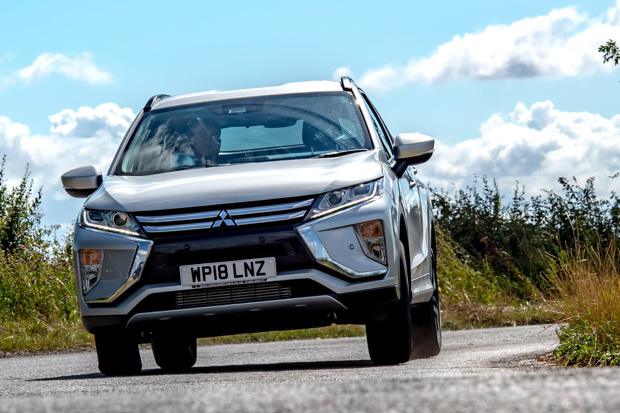
Date: 6 September 2018 | Current mileage: 5579 | Claimed economy: 42.8mpg | Actual economy: 33.8mpg
It's fair to say that Keith isn't a huge fan of the Mitsubishi Eclipse Cross. Despite being responsible for all the new car reviews that go on HonestJohn.co.uk, I've never driven one - so was keen to swap long-termers for a few days and find out exactly what's good (and not so good...) about the Eclipse Cross.
We'll start with a positive. Everything feels well made. Not premium - definitely not premium - but like they'd last years of abuse. That's the thing about Mitsubishis, they are reliable and will generally last forever. That certainly seems true for the Eclipse Cross.
But boy does it feel old fashioned. As soon as you sit in the driver's seat, you realise the ergonomics are pretty dire. The manual gear lever feels high up - almost like you're driving a truck, and the manual handbrake is awkwardly positioned.
There are buttons everywhere, with the start button hidden awkwardly behind the steering wheel. There are numerous blanking plates - odd, as it's not short of standard equipment - and a small touchscreen that's a bit too far away to actually touch (fortunately there's a strange little touchpad between the seats that you can use instead).
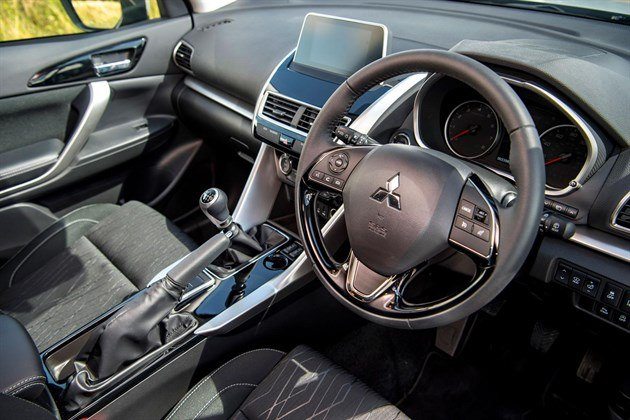
It'll last forever, but it's definitely not premium.
Passengers in the rear might be less grumpy, once they're actually in the car. I banged my head trying to get in the back, but once you're there you sit relatively high up with a reasonable amount of head and legroom. The same can't be said for the boot which, at 448 litres, is a respectable (albeit far from class-leading) for its class. It's an awkward shape, though - the sloping boot hatch making it difficult to carry anything substantial.
The driving experience is nothing to shout about, either. It rolls about a lot and the ride is extremely harsh. There's only a petrol available - meaning it's thirsty, although its 163PS and 250Nm of torque mean it rarely runs out of steam.
As a rival to mainstream crossovers like the Nissan Qashqai, Kia Sportage and SEAT Ateca, the Mitsubishi Eclipse Cross can't really compete. It's just not as polished; feeling at least 10 years old - and the singular engine option will put off many buyers, too.
I suppose it appeals to a very niche buyer, similar to the Subaru XV. If you want a car that feels robust, will last forever and aren't too concerned by aesthetics, the Mitsubishi Eclipse Cross starts to make sense. But for many people, it just won't stack up.
AB
Who would buy a petrol Mitsubishi Eclipse Cross?
Signs of strain are showing on Keith's relationship with the Eclipse
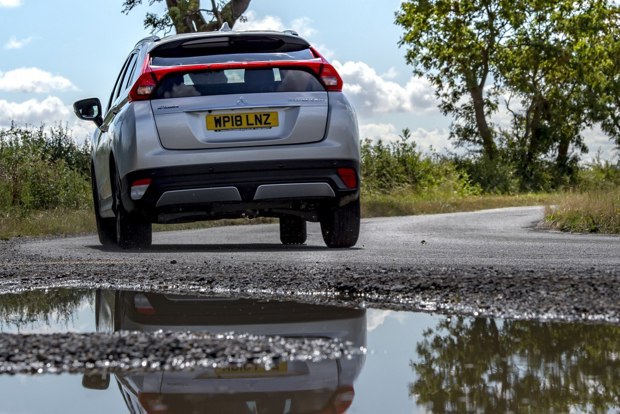
Date: 20 September 2018 | Current mileage: 6044 | Claimed economy: 42.8mpg | Actual economy: 34.2mpg
There’s no two ways about it, running our long-term Eclipse Cross is proving a struggle. Which is odd because I'd have thought that I'm pretty much the target market for a crossover vehicle.
If you haven’t met me before, I’m 40, married, homeowner, have two kids – oh and like so many car buyers I need a car. Whether it’s to ferry children to parties, swimming or school, or head off to various gigs (both playing and watching).
Like many people, I also don’t live close to my work – it’s a 60 or 70 mile round trip each day that isn’t served by public transport. So, yes, a car is definitely something I can’t do without - and that seems to be the issue.
The problem? Clocking up roughly 1200 miles a month in our petrol Eclipse has been crippling on the wallet. I know it’s fashionable to bash diesels and car makers are pushing petrol-engined cars, but some of us do need to go for frugal, rather than fashionable.
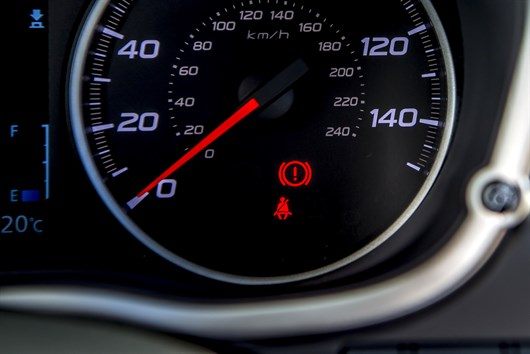
Empty fuel gauge... you never get used to it.
It’s not the car’s fault, of course. It was always up front about its drinking problem – official figures quote 42mpg so we expected 37mpg was do-able. And it is, as long as you don’t mind sitting at 55mph everywhere and adding ten minutes to your commute and not using the air-con, heater, stereo.
As a dad of two young girls though, we’re always in a rush. From forgotten hair bobbles to lost lunchboxes and misplaced PE kits, leaving the house is never a simple task and I don’t really have time to dawdle.
I could keep the heating off and ban Taylor Swift from the stereo (believe me, I’ve thought about it) but Tay-Tay is handy for drowning out the moaning/fighting/crying or just generally getting them to concentrate on not being hungry.
But the Eclipse’s thirst got so bad in December that I had to take emergency action and ask New Cars Editor Andrew if I could swap into his Volkswagen E-Golf for a bit to keep the costs down (I can charge it off a domestic socket at work… thanks HJ!).
To me, it speaks volumes if someone who fits the template for a diesel driver would rather have an electric car with a 100-mile range over a petrol. In fact, it puts an Eclipse Cross purchase firmly in the luxury item category.
Wishing for a rally-inspired Eclipse Cross
Keith contemplates some Dakar-spec upgrades for his long-termer

Date: 4 October 2018 | Current mileage: 6651 | Claimed economy: 42.8mpg | Actual economy: 32.1mpg
For someone who spent many a happy Sunday afternoon watching Mitsubishi Evos take on Subaru Imprezas in the World Rally Championship, the lack of – er – sporty variants in Mitsubishi’s current model line up is a bit disappointing (to say the least).
Don’t get me wrong, I completely understand that they’re trying to run a business – but where are the hero cars that lead you to the showrooms? For many car makers, the old saying ‘win on Sunday, sell on Monday’ still holds true.
I’ve often thought about ways to squeeze a bit more performance out of our long-term Eclipse Cross. I reckon you could easily get another 100PS out of the under-stressed 1.5-litre turbo. Match that to some uprated brakes and you’re away.
Of course, where the car really needs money sending on it is with the suspension and handling. I’m generally not a fan of messing with manufacturer specs on cars – after all, they’ve spent hundreds of thousands of pounds trying to get it right.
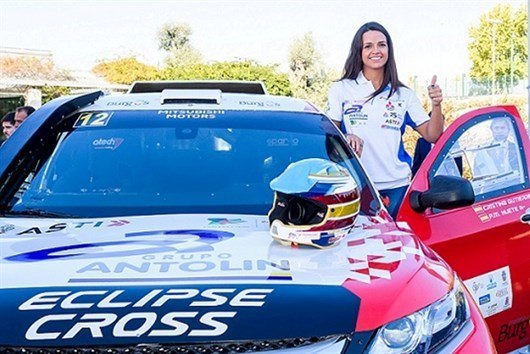
Spanish driver Cristina Gutierrez will take on the Dakar rally in an Eclipse Cross.
It’s at times like this that I recall a colleague who owned a very early Mazda MX-5. He spent a year (and a small fortune) swapping and uprating the springs and dampers on his car… only to finally put them back to stock, concluding it never handled better than when it left the factory.
Sadly, the same can’t be said for our Eclipse. While its exterior styling may be cutting edge, it feels very old hat at the wheel. In fact, the rear suspension is so bad that it’s caught me out a couple times. On a fairly flat road you can make brisk(ish) progress, but throw in some camber changes, a hill and some pot holes and it can get horribly out of shape without even trying.
So with the news that Mitsubishi is to enter the model in the 2019 Paris-Daker, I’m hoping that some of the toys will filter down to the road car… even if it’s just a warm version of the 340PS diesel mated to the six-speed sequential gearbox (although AP racing brakes and trick limited-slip diff four-wheel drive would be good, too).
With the January race date not too far away, I’ll happily volunteer our long-termer if they need to do more R&D on the Dakar prototype.
Mitsubishi Eclipse Cross to enforce rapid justice
The heat is on as the Eclipse Cross gets a blue-light gig
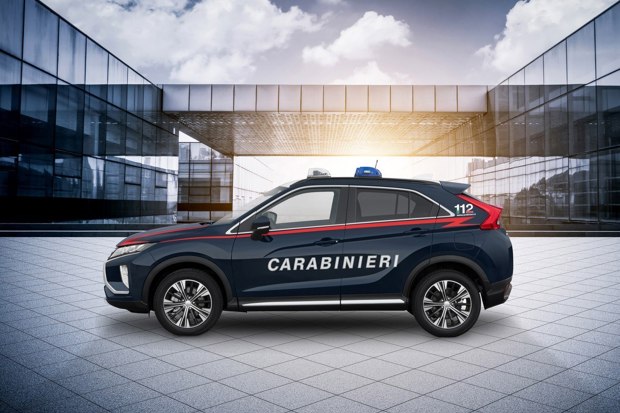
Date: 18 October 2018 | Current mileage: 7003 | Claimed economy: 42.8mpg | Actual economy: 34.1mpg
I don’t know about you, but I miss the days when the enforcers of our law used to tool around in the finest homegrown motors.
If you’re not sure what I’m on about, then I’ll remind you. Did you know, for example, that police used to use the Daimler SP250 ‘Dart’ as a patrol car?
Once Britain’s motorway network began to take shape, officers needed something that could keep up… although with only two seats they often had to wait for back-up. But it was the 1960s and everyone was more polite then, I guess.
Needless to say, my love of ‘hot fuzz’ extends to the current day, with a top three that currently includes a Dodge Charger police interceptor (147mph top speed) and a 570PS Lamborghini Gallardo.
My current favourite is the Brabus Rocket – a heavily tuned Mercedes-Benz CLS with a 6.3-litre biturbo engine and 228mph top speed. Before anyone asks, I’ve excluded the Abu Dhabi polices Nissan GTR and Bugatti Veyron on the grounds that, as far as I know, they’re just PR steeds rather than actual enforcers of fast justice.

An honourable mention must also go to the Ariel Atom used by Avon and Somerset police force (which also used a Honda NSX), and any force still preserving with a Lotus Exige.
Now Mitsubishi is planning to join the ranks of rapid rozzers by slipping its Eclipse Cross onto the force rosta. We’re not sure about the size of the order book, but the Italian State Police will be use the cars for emergency transport of organs (a bit like when when two SD1s made the famouse 'liver run').
Mitsubishi has previously supplied specifically equipped and armoured Shoguns for use in high-risk areas including Afghanistan and Iraq, where ruggedness and reliability are of utmost importance, as well as the i-MiEV electric city-car for use in low-emission urban areas.
Hopefully, we'll get a chance to have a closer look at them at some point.
Eclipse proves a reliable steed
Eclipse goes away. Shogun arrives. We know which one we'd keep..
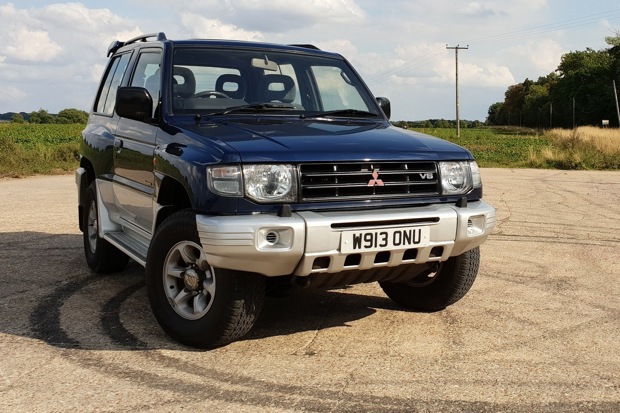
Date: 11 January 2019 | Current mileage: 7003 | Claimed economy: 42.8mpg | Actual economy: 34.1mpg
Over the past six months, we’ve been impressed with our Eclipse Cross's reliability. Sure, this isn’t the 1970s where customers were relied on to do much of the R&D, but it’s not that long since we’ve had to send a car back.
About 12 months ago, our long-term Peugeot 3008 had to be replaced because of a gearbox fault, and we struggled in the cold weather with a Citroen Grand C4 Picasso that suffered from a frozen or locked-up screen.
Doesn’t sound like much, but when everything you need to control the car is contained within the screen (like the heating), we came very close to returning it.
In the case of our long-term Shogun, it’s had two trips away from us. The second, and most mysterious was for ‘recall’ work.

Cracked windscreen meant our Eclipse had to go away.
We don’t know what this was for (and Mitsubishi won’t tell us) but it must’ve been important because they insisted on doing it on the Friday before Christmas and were at one point planning to do a 200 mile trip back to Cirencester with it.
A quick look at the list of recalls show two current ones – faulty active stability control system, which means the ABS and forward-collision mitigation could also be faulty. The second is a faulty forward-collision mitigation system.
But the most exciting away trip was when a stonechip resulted in an enormous windscreen crack. On this occasion they replaced it with a short wheelbase Shogun SWB 3000 V6 from the year 2000. Needless to say it is still and excellent and rugged off-roader with decent ride quality.
In fact, after spending a couple of weeks with it, we rather missed it when it went back to Mitsubishi’s classic garage. In a few weeks we’ll be able to see whether or not we feel the same way about the Eclipse.
Total Eclipse of the heart - or a Cross to bare?
We look back over six months with our Mitsubishi crossover
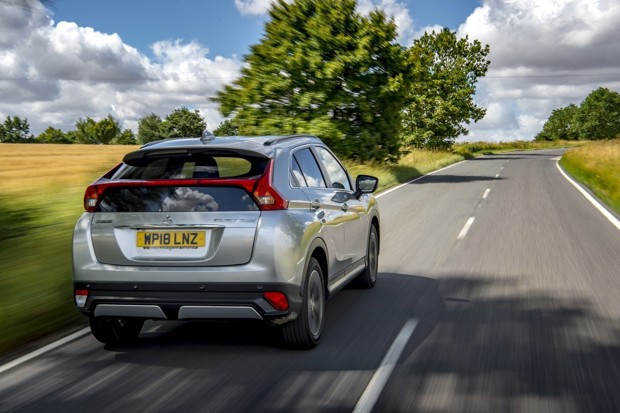
Date: 24 January 2019 | Current mileage: 7999 | Claimed economy: 42.8mpg | Actual economy: 31.9mpg
It’s time to say goodbye to our Mitsubishi Eclipse. The latest crossover from the Japanese carmaker has been with us for more than six months, and during that time we’ve been able to put it through its paces. We’ve taken it on the school run and the weekly shop, the daily commute, family holidays and everything in between.
Which means we can tell you exactly what it’s like to live with so you can decide whether or not it’s right for you.
The styling is much improved over Mitsubishi’s previous efforts – a bold but costly move because while it might stand out on the motorway the design takes a huge chunk out of rear seat headroom and bootspace.
True, there’s plenty of leg space room for rear seat passengers with the bench slid all the way back – but this takes us to one of our major criticisms – bootspace. In short, it’s tiny. And no we don’t know what they’ve done with it either. So if you need to lug stuff around, this probably isn’t the car for you.
And the whole moving things schtick isn’t helped by the fact that there’s currently no diesel in the range. Not that the petrol isn’t capable – we were impressed by how peppy it was (once the turbo kicked in) but less impressed with the fuel consumption. We never got anywhere near the official figure. Or even over 40mpg, with real world driving bringing up mainly a figure in the low-30s.
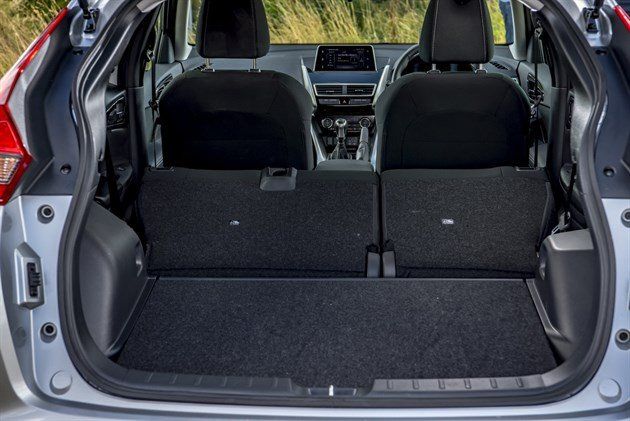
Stylish design restricts boot space; load floor isn't flat, either.
Fine if you’re not a high-mileage driver, but as we normally do 12k a year, it hurt us financially. Which is a shame because in many ways the car is good value for money. Our £23k car gets head-up display, parking sensors, heated front seats, keyless entry… pretty much everything apart from 360-degree parking camera and the uprated stereo (which is personally is an option I think it would benefit from).
All cars get the no navigation option as standard, which means you can use Waze (it’s free, and very good). And all cars get the touchpad. Which we’ve never warmed to – it doesn’t do anything you can’t do by just pressing a button and the extra layer of complexity requires a lot of looking down.
Don’t think this is a high-tech all-new platform, however. The driving experience is very old school – from the high-up seats to the chunky switchgear. Some will find it familiar, others will wonder why it hasn’t been updated.
So is this a car we’d recommend? Sadly not. It only really makes sense if you’re a loyal Mitsubishi customer and fancy swapping your current model for something a bit more modern (and you don’t have many miles to do). It’s a car that’s roundly beaten by the competition.
